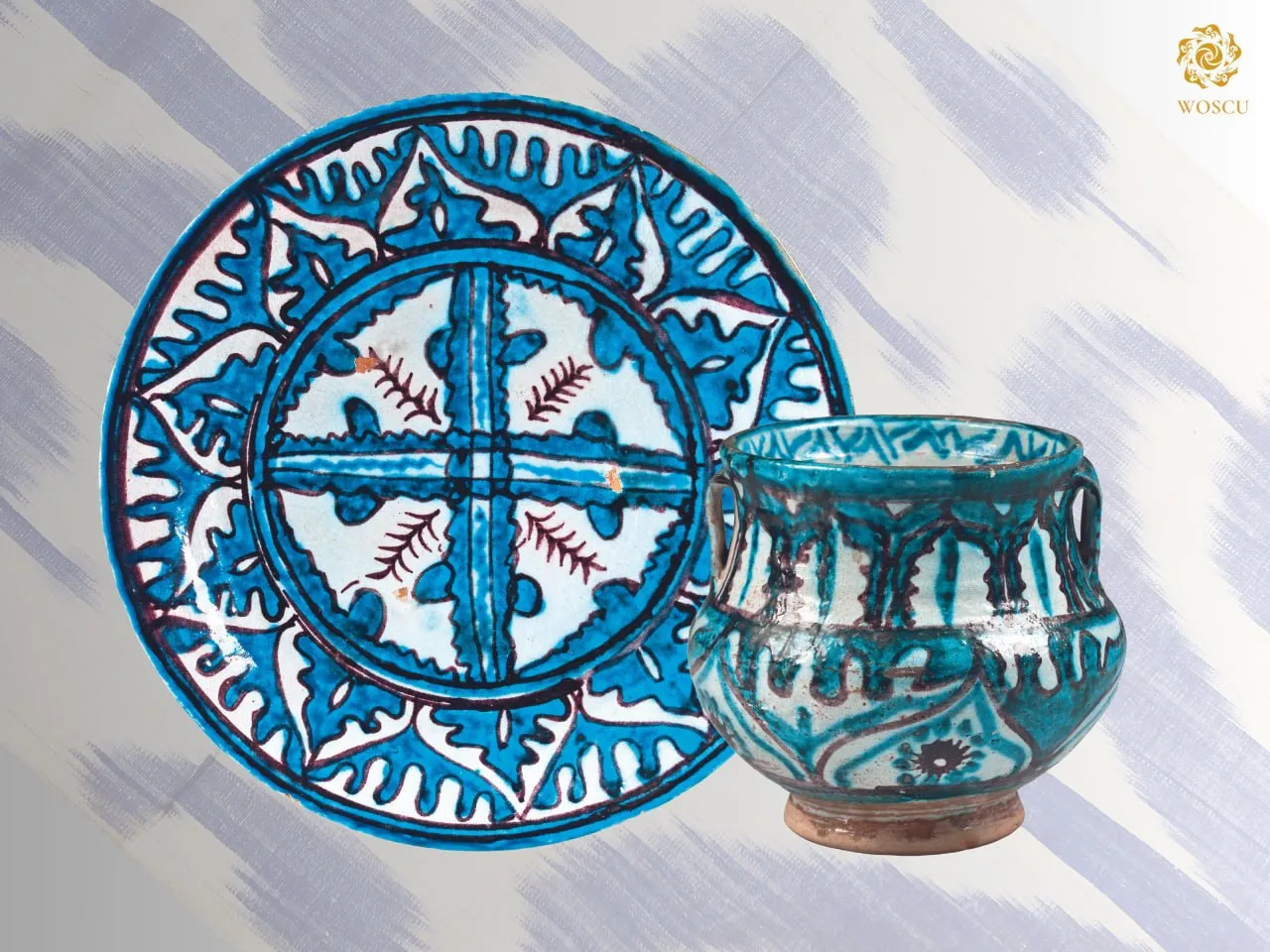
Ceramic vessels had not only practical value, but also decorative. They served to decorate the interiors of houses, especially in an urban environment, and were an integral part of wedding gifts.
Ceramic production was concentrated mainly in agricultural oases with settled population – large villages and cities. Famous centers for the production of glazed ceramics were Bukhara, Samarkand, Shahrisabz, Urgench, Gijduvan, Kattakurgan, Gurumsaray, Andijan, Rishtan, Khiva and Fergana. The largest pottery center in the second half of the 19th – early 20th centuries was Rishtan (Fergana Valley). Even today, the products of this city are considered to be a symbol of traditional Uzbek ceramics.
Pottery was exclusively produced by men. In recent past, each master, as a rule, specialized in certain types of items – vertical, elongated shapes or horizontal and flat. High vessels, such as jugs, vases, or vessels for storing food and water, were elongated. They were made by masters – kuzagars. Flat forms – lagans, all sorts of plates and bowls were the specialty of kosagars.
Pottery from the kosagarlik group were always glazed, vessels of the kuzagarlik type could be glazed, partially glazed or without glaze. Glazed ceramics in the 19th – early 20th centuries varied in color. One group consisted of ceramics made in green, brown and yellow tones and covered with lead glaze. It was mainly produced in centers such as Gijduvan, Kattakurgan, Samarkand, Bukhara, Tashkent and Shahrisabz.
The second group consisted of ceramics of blue-turquoise colors on a white background, covered with alkaline glaze (ishkor). This color range is characteristic mainly of the Fergana Valley and Khorezm region. However, in the 18th – 19th centuries whiteblue ceramics were also produced in Bukhara and Samarkand.
The oldest items in the collection of the Náprstek Museum are vessels of the late 19th century. These are mainly glazed items obtained in the 1970s and representing various kinds of traditional tableware (lagan, badiya, khurma), as well as clay whistles, the works of famous Uzbek potters. The museum documentation preserved the names of such masters as Makhmud Rakhimov and Khakim Satimov from Gurumsaray (Fergana Valley), Khamro Rakhimova from Uba (near Bukhara), and Rayimberdy Matchanov from Khanka (near Khiva).
You can learn more about the topic in the book-album "The Collection of the Czech Republic" (Volume XVI) in the series "Cultural Legacy of Uzbekistan in the World Collections".
The main sponsor of the project is the oilfield services company Eriell-Group.
